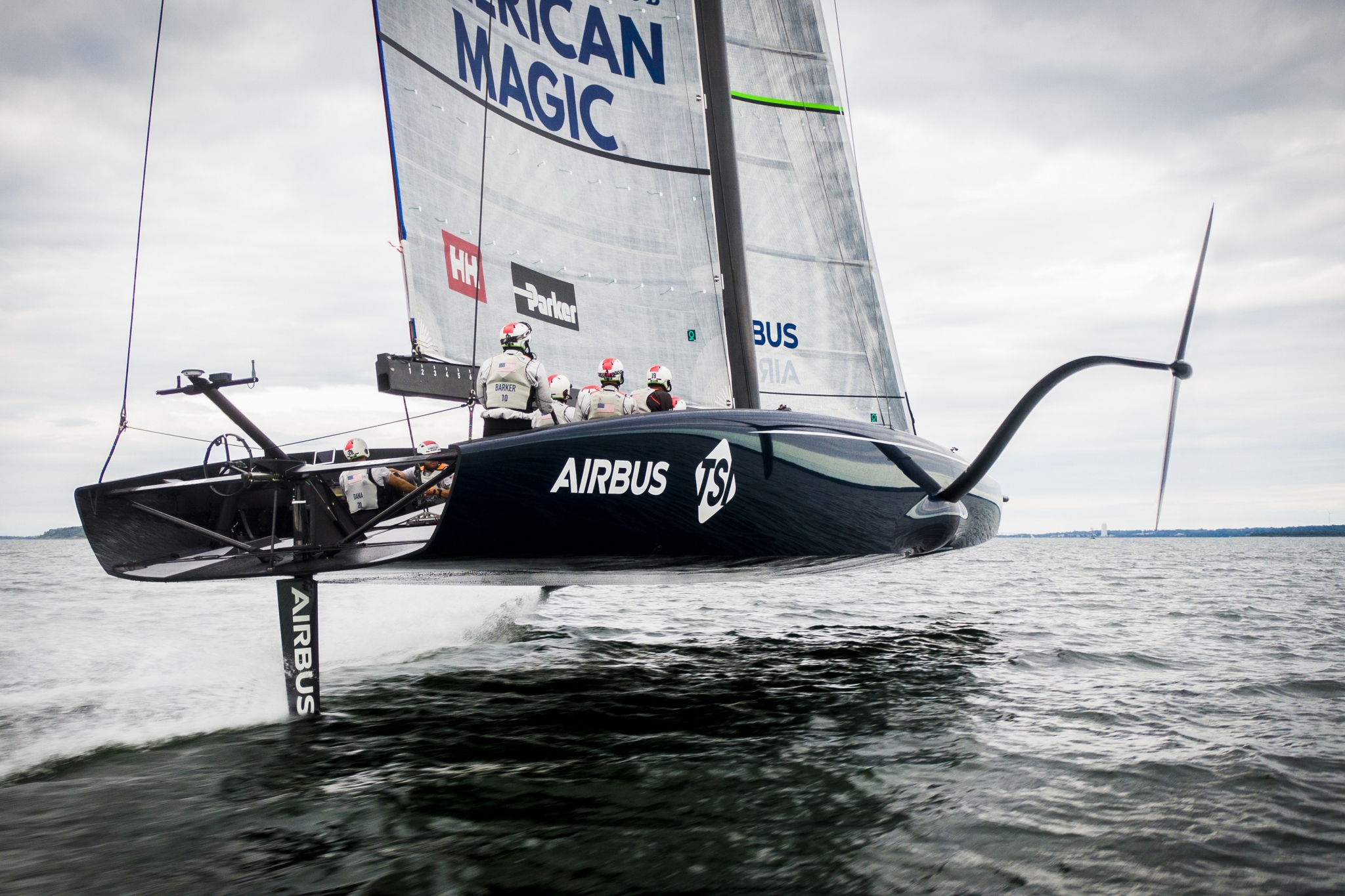As shipping looks for new an innovative fuel saving technologies, it finds itself turning to the aviation and professional sail racing industries for inspiration. In this article Samantha Fisk looks at some of the latest technologies from the America’s Cup Challenge contenders to see how future tech may work.
Speed, handling and the best technology are all in the mix for one of the most prestigious racing events in the yachting calendar, the America’s Cup Challenge. The New York Yacht club are looking to set new standards in the world of racing through its latest design that will effectively lift the yacht out of the water as it sails.
The U.S. Challenger’s first AC75 racing boat was officially named and launched this month, named Defiant, the foiling monohulled yacht underwent initial testing on Narragansett Bay earlier in the month. It has taken an estimated 76,000 combined hours of fabrication and finishing work by the production and shore teams of American Magic to produce the yacht that will enter next years’ Challenge.
One of the key elements of the design is with the development of the hullform, where the design has been developed to behave like a wing of an aeroplane. Matthieu Duvellory, media relations manager, Airbus explains that Airbus has been involved with optimising design, engineering, data capture, analysis and simulation, as these: “are among the parallels between Airbus and American Magic design teams. Yachts and aircraft have multiple shared technologies.”
He further explains how the ‘wing’ design of the vessel will work: “Wings produce lift while sails generate thrust, but both cut through the air in a similar way. When the hulls of American Magic yachts lift out of the water, aerodynamics become crucial to speed and stability as they “fly” across the water on foils shaped like the wingtips of Airbus aircrafts.”
As the technology in racing has developed over the years with foils now starting to act more like a wing of an aircraft, yachts are getting faster and more dynamic in their designs. Pushing the envelope of design has meant that now the boundaries between the two industries are starting to cross over.
Hans Hienkens, commercial airline captain and experienced yachtsman explains how the handling of these high-tech yachts now overlap flying an aircraft. “Essentially is a mix between flying and sailing. Both have a lot of commonality – sails work like wings (not like a parachute!) and the key difference between these boats and traditional sailing is the ability to foil. This is where the foils raise the boat out of the water and they also act like wings. This reduces drag and therefore they go faster.”
The challenge of creating a vessel that not only can handle sailing through water, but essentially ‘flies’ when it lifts out of the water; needs both the experience of hydrodynamics and aerodynamics. “As partners from the start, Airbus is working on simulation capabilities, ‘flight control’ for the boat, system architecture design and testing, aero/hydrodynamic optimisation, appendages structure, and controls and instrumentation. Many of these areas will require rapidly evolving approaches to data analysis”, explains Duvelleroy.
Hienkens also adds that with a design such as this: “It is a huge technology challenge. The loads are massive, the foils have to support the weight of the boat + crew + force of the wind. So, the design challenge is to make them and the boat as light as possible (to lower the load and make the boat easier to lift out) whilst strong enough to not break.”
He also notes that: “Putting a traditional sailor into one of these is like putting a putting someone capable of flying a light aircraft under VFR (visual flight rules) into a Eurofighter. If you hit the water at the speeds these craft travel it will be like hitting concrete – hence all the protective gear they wear.”
As for future cross collaboration, Airbus is focusing on the America’s Cup Challenge for now due to the technical demands that it brings, “For now, that makes it Airbus’ main interest to support American Magic design the fastest possible flying yacht for 2021”, Duvelleroy notes. But, working with American Magic has brought a lot of learning to both sides, “This sort of work, carried out in a highly open and collaborative small team atmosphere, offers an enormous range of possibilities when fed back into the company ways of working”, he adds.































